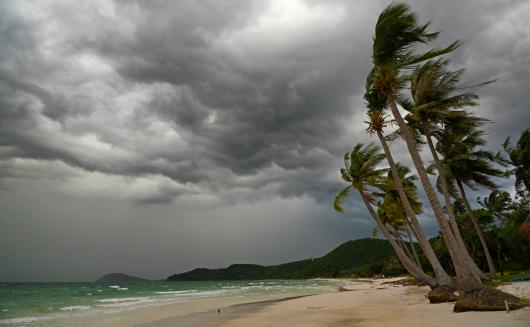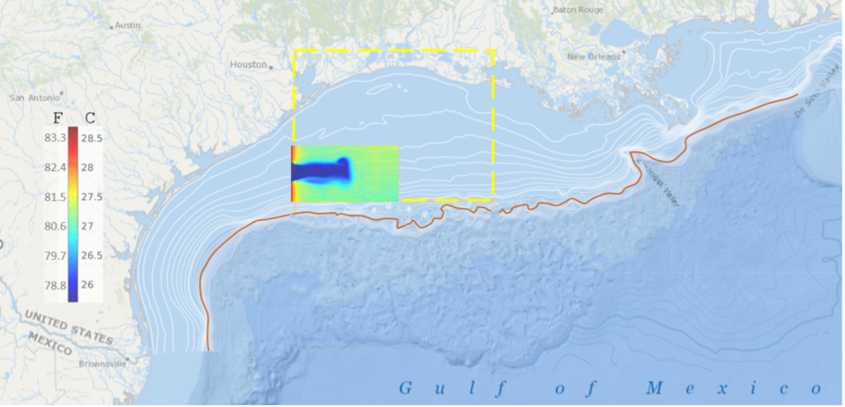High surface water temperatures in tropical areas are the key source from which tropical storms absorb energy and grow into hurricanes of increasing magnitude, causing more damage.
Deeper down in the ocean the water temperature is cooler. OceanTherm develops technology that can lift cold water to the sea surface, cooling it and thus reducing the energy available to a hurricane, preventing it from building its strength.

OceanTherm develops technology that aims to mitigate the impacts of hurricanes. The large-scale nature of the problem makes it helpful to deploy workflows that utilise HPC to answer questions related to system design, performance and, ultimately, operation and preparedness.
The Norwegian Competence Centre for High-Performance Computing (HPC) and relevant research groups at SINTEF have collaborated with OceanTherm. This joint effort aims to standardise workflows, thereby creating a structured computational pipeline. This pipeline incorporates public data sources and currently involves three hierarchically nested computational modeling systems.
From Norwegian fjords to the Gulf of Mexico
All three systems rely heavily on HPC resources for timely and accurate results. The standardised workflow will enable documentation, reproduction, and high throughput to continuously investigate a comprehensive set of scenarios. Bubble curtains have been a proven technology to keep ice out of Norwegian fjords by bringing warmer water with higher salinity up to the water surface through buoyancy introduced by pipes submerged in the fjord. The pipes provide a curtain of bubbles when air is pumped into the pipe and released through small holes.
The idea the founder of OceanTherm had, was that this could also be used in tropical areas, to bring colder water to the surface, lowering the surface temperature to below the magic threshold of 26.5C or towards it, thus removing or reducing the energy available to the hurricanes passing over the surface.
OceanTherm had already demonstrated this in a previous project with SINTEF. However, the challenge now was to determine how this could be implemented in real-world scenarios. This requires predicting the hurricane's path and identifying the optimal location to activate a bubble curtain for maximum impact. Manually performing these complex computations every time a hurricane is forecasted, and deploying a bubble curtain in time to be effective, is not practical.
The Norwegian Competence Centre for HPC, by combining advanced Computational Fluid Dynamics (CFD) domain expertise with Information and Communication Technology (ICT) tools such as workflow management, demonstrated that it is indeed possible to create automated pipelines. These pipelines can utilise multiple publicly available data sources and execute the necessary computations on HPC systems in time to take precautions. This process can save lives and protect assets by reducing the energy of an incoming hurricane before it reaches the Gulf of Mexico's shore.


This project receives funding from the Research Council of Norway and the European High-Performance Computing Joint Undertaking (JU) under grant agreement no. 101101903. JU receives support from the Digital Europe Program and Germany, Bulgaria, Austria, Croatia, Cyprus, Czech Republic, Denmark, Estonia, Finland, Greece, Hungary, Ireland, Italy, Lithuania, Latvia, Poland, Portugal, Romania, Slovenia, Spain, Sweden, France, Netherlands, Belgium, Luxembourg, Slovakia, Norway, Turkey, Republic of North Macedonia, Iceland, Montenegro, Serbia.